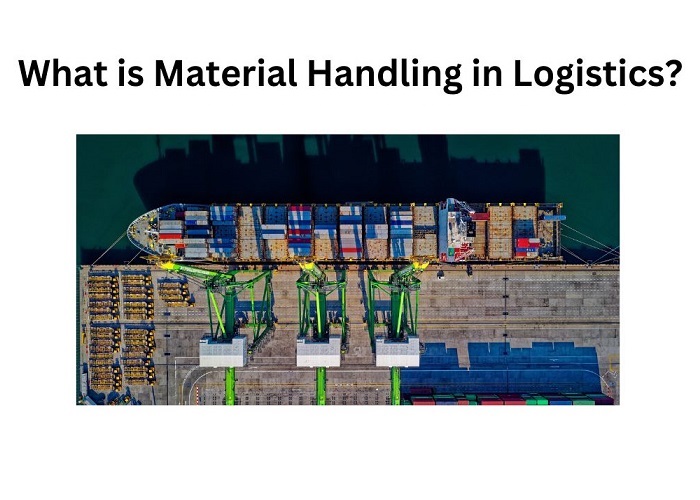
The truth is that how you manage and operate, your company says a lot about it. And the most critical factor for companies in the logistics and shipping industries is equipment management.
Because receiving damaged goods from your clients negatively affects your business in the logistics and shipping sectors, you should streamline your firm with material handling to improve your supply chain process and logistics.
What is Material Handling?
Moving commodities and materials from one place to another is material handling. From production to distribution, it involves storing, protecting, and controlling goods. It is frequently employed in warehousing, where products must be safely retrieved, stored, and dispatched. Costly problems like product loss or damage are reduced as a result. Either a human operator or an automated storage operation can handle material handling.
The supply chain moves more quickly when materials are handled properly, which makes it possible to deliver goods to clients more quickly. Streamlining your material handling procedure can accelerate last-mile delivery to clients.
Material Handling Throughout the Supply Chain
Material handling is crucial across the whole supply chain. Here is a brief description of the many steps of material handling systems.
Manufacturing
The phase of the supply chain where a product is made is referred to as manufacturing. Material handling in manufacturing may refer to the transfer of finished goods from the production floor to storage. This can entail using forklifts or side loaders and personnel handling equipment.
Transportation
Once a product is produced, it needs to be distributed. The finished products are transferred from the manufacturing plant to a wholesaler, distributor, or storage facility during the transit phase of the supply chain.
Storage
Distribution centers, wholesalers, and warehouses rarely deliver goods directly to clients. These items are typically unloaded, inventoried, and securely kept at the location. Then, they are kept safe until a shop or supplier needs them.
Distribution
The goods can now leave storage and move on to the distribution phase. Here they interact with the final user, such as a customer or a retailer. The items are removed from storage, loaded onto shippable unit loads, such as pallets, and transported to their final location.
Types of Material Handling
The complex material handling process may entail both machine- and human-led operations. Learn more about the two primary methods of material handling and how they work best together by reading on.
Manual Handling
Humans are what drive manual material handling. Workers may be needed to push, pull, raise, lower, and carry objects. To assist them, they can employ dollys, hoppers or bucket elevators.
Sadly, this increases the possibility of human error. For instance, people make mistakes by dropping packages.
Additionally, mistakes might cause harm to the person making them. For instance, lifting an enormous weight improperly can result in a back injury.
Automated Handling
Professionals in material handling are emphasizing automated handling more and more. Automated handling involves moving products with machinery rather than relying on people.
Conveyor systems, hand trucks, and automated storage and retrieval systems are examples of material handling equipment. Some automated handling still necessitates human involvement. For instance, a driver is required for a conventional forklift truck.
Advanced automated handling, on the other hand, completely automates processes using tools like robotics, motion sensors, and artificial intelligence. For instance, an automatic guided vehicle can take the position of a human-driven vehicle when moving packages from a conveyor belt to a pallet truck.
Why is Material Handling Important?
Professionals in material handling services are emphasizing automated handling more and more. Automated handling involves moving products with machinery rather than relying on people.
Conveyor systems, hand trucks, and automated storage and retrieval systems are examples of material handling equipment. Some automated handling still necessitates human involvement. For instance, a driver is required for a conventional forklift truck.
Advanced automated handling, on the other hand, completely automates processes using tools like robotics, motion sensors, and artificial intelligence. For instance, an automatic guided vehicle can take the position of a human-driven vehicle when moving packages from a conveyor belt to a pallet truck.
- Reduces operational costs
- Minimizes accidents and damages
- Enhances customer experience
- Increase the efficiency and productivity of your workers
Main Principles of Material Handling
The danger of lost or damaged items can be decreased, and your entire business operations can be improved with materials handling optimization. Using the concepts listed below, you can effectively plan and carry out any material handling processes.
- Planning
- Standardization
- Space utilization
- Ergonomic
- Automation principle
Conclusion
Your products and equipment travel a distance greater than a few metres between a truck and a warehouse. Effective material handling procedures maintain production flow, guarantee timely delivery of items, guard against workplace accidents, and raise general staff morale. But you also need to pay great attention to your shipping and logistics and choose the appropriate material handling system.
You can streamline your trip planning with help from Upper. With its unique and sophisticated capabilities, you can quickly and easily optimize your routes, increasing operational effectiveness and guaranteeing that your clients receive their timely items.




